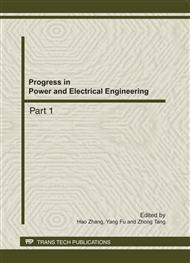p.599
p.604
p.609
p.615
p.621
p.627
p.631
p.636
p.642
A Study on the Mechanism of Bottom Hole Hydraulic Pulse Increasing Drilling Rate
Abstract:
Practically, the distribution and variation of the bottom-hole hydraulic energy has significant influence on drilling rate, and it’s helpful to induce bottom-hole hydraulic pulse to improve the rock breaking and drilling efficiency. The analysis of bottom-hole rock stress condition and cuttings start-up mechanism indicates that, bottom-hole hydraulic pulsation can decrease the bottom hole pressure, reduce the fracture strength of rock, and strengthen bottom-hole purification, thus improve the efficiency of rock breaking and drilling. The higher the pulsation value is, the more effective of the acceleration of the drilling rate, while well depth increases, the acceleration effect diminishes gradually. Simulation of jet flow field drilled by 3-nozzle 3-cone bit, combined with field application, verify the mechanism that bottom-hole hydraulic pulsation could improve ROP. The result of the study provides a basis for the development of practical technology.
Info:
Periodical:
Pages:
621-626
Citation:
Online since:
October 2011
Authors:
Price:
Сopyright:
© 2012 Trans Tech Publications Ltd. All Rights Reserved
Share:
Citation:


